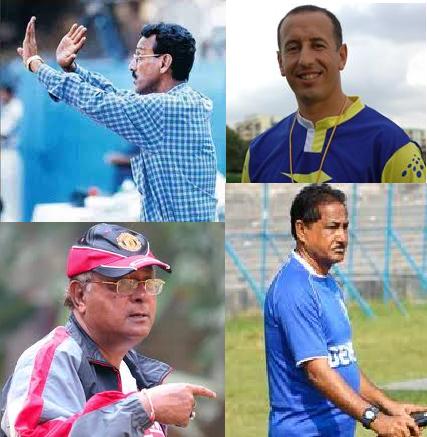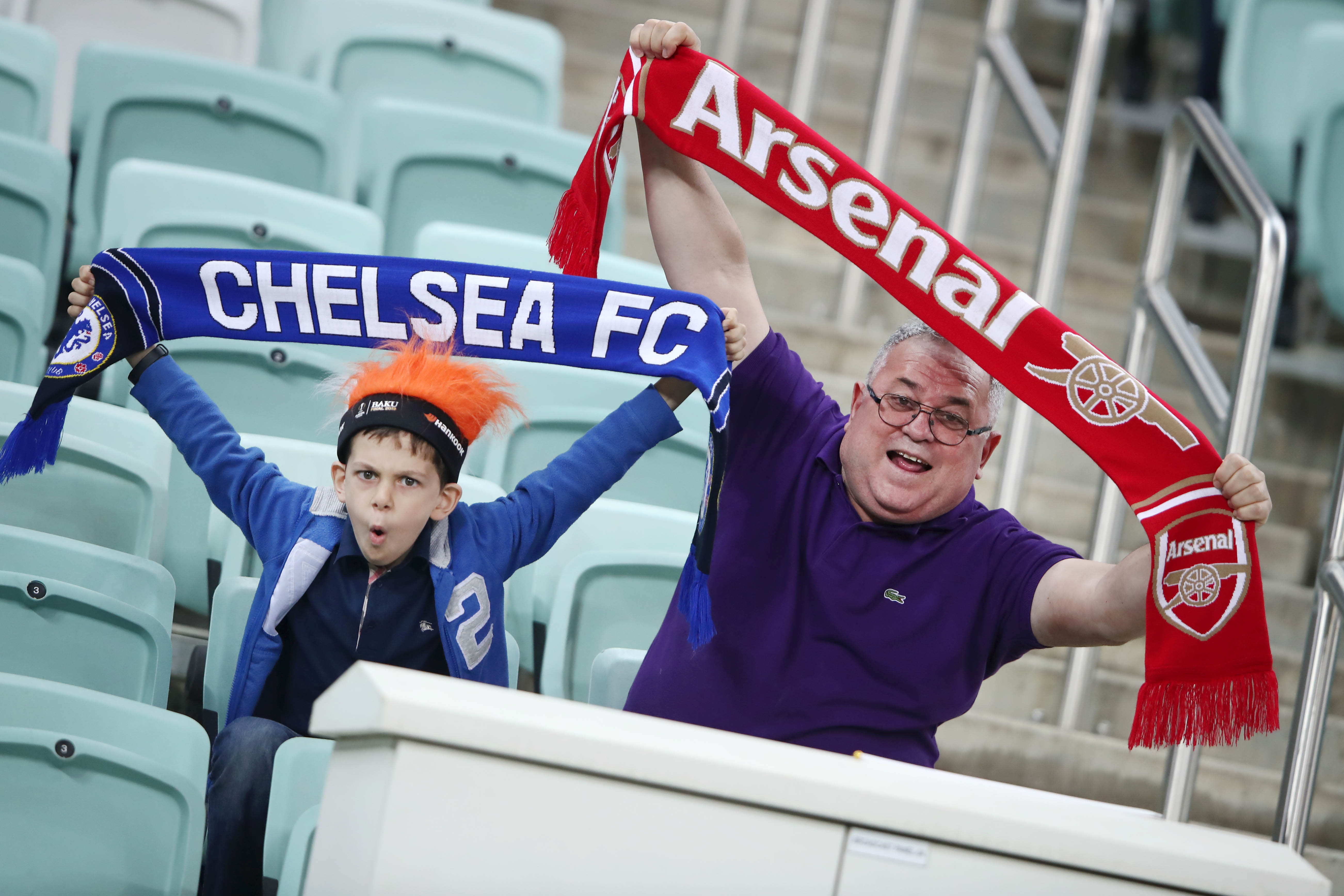The origin of football in India can be traced back to the mid-19th century, when British soldiers and sailors introduced the game. While it has rarely even been completely up-to-date with prevalent tactics of modern football, Indian football has gone through its fair share of tactical revolutions. In this series, we will make an effort to track down the tactical evolution of Indian football.
1) Early Era – Profiling three great 2-3-5 teams
2) First Revolution under Syed Abdul Rahim
3) The Tactical Innovations of P.K Banerjee, Amal Dutta and Syed Nayeemuddin
4) Modern Era – New Generation of Indian Coaches and Foreign Managers
In last two decades Indian football has seen a number of talented coaches, both Indian as well as foreign imports. A number of these coaches have tried new and innovative formations keeping in sync with popular tactics on the global stage. Among Indian coaches Sabbir Ali, Sukhwinder Singh, Derek Perreira, Armando Colaco, Subrata Bhattacharya and Subhash Bhowmik deserve special mention. Notable foreign coaches include Danny Mclennan, Clifford Chukuwama, Karim Bencharifa, Carlos Alberto and Drago Mamic and Trevor Morgan.
Mohun Bagan (1999-2001)
When Subrata Bhattacharya took charge of Mohun Bagan in 2000, the Green & Maroons were undergoing a period of transition. Bhattacharya, one of the finest defenders of his era, instantly knew that Bagan’s problems lay in its frail defence. Playing a four man defence at that time, Sami Omollo’s indifferent form resulted in Mohun Bagan’s poor form. Dulal Biswas at right-back tried his best but he was let down by a porous left flank. Subrata’s first step was to stabilize the defence by changing the formation to 5-3-2. However, Subrata had to solve the loss of a man in midfield. What Mohun Bagan needed was a competent overlapping left-back.
Left-back Dusit Charlesman arrived from Thailand as an answer to Subrata’s woes. Mohun Bagan still needed a striker upfront to cover up for Cheema Okerie’s absence (banned by IFA for manhandling referee Bikash Mukherjee on September 14, 1999). Mohun Bagan recruiters delivered another gem – veteran Uzbek striker Igor Scirivin was added to the squad. Stephen Abarowei, one of the best foreigners in Indian football in late 90s was also added. A diminutive and quiet Brazilian named Jose Ramirez Barreto was signed during Durand Cup. This was arguably the best lineup of foreign players ever assembled in a single team.
Mohun Bagan’s 1999/2000 National Football League winning team, playing a 5-3-2
The three man midfield was spearheaded by Basudeb Mandal, perhaps the best passer in Kolkata football since Krishanu De, who combined with Mohun Bagan legend Satyajit Chatterjee to spray passes towards Barreto and Igor. R.P Singh with his pace often latched onto Dusit’s inch perfect crosses from opposite flank before setting up Igor’s goals. Barreto, used mostly as a withdrawn striker would drag defenders out of their positions and create space for Igor. The ageing Uzbek striker was blessed with unmatched poaching instincts and top-scored that season, with eleven goals. Subrata went on to win several titles in later years but his teams were rarely as entertaining as Mohun Bagan’s class of 1999-2000 NFL.
East Bengal (2003-2005)
In this era, Subhash Bhowmik’s East Bengal did exceptionally well, winning back to back national league titles. However their greatest achievement was winning the ASEAN Cup in Indonesia defeating a host of South East Asian teams on the way. Bhowmik, a lethal winger under PK Banerjee during his playing days, was influenced by Luiz Felipe Scolari’s acclaimed 3-5-2 formation with overlapping wing-backs. The presence of Debjit Ghosh and Brazilian Douglas D’Silva as defensive screens protected the three back system. The East Bengal team in that era had a perfect mixture of power and pace.
In ASEAN Cup regulations restricted teams from fielding less than two foreigners in the group legs. In the first match, East Bengal started with a defensive 3-3-3-1 formation with Baichung operating as a lone striker. Bhowmik fielded his usual formation from the next match onwards using Mike Okero with Baichung. The Okero – Bhutia combo was particularly lethal because of the sudden acceleration both strikers could call upon, along with their ntaural poacher instincts. Douglas was not only a solid tackler but also had a brilliant array of passes and wonderful set-piece delivery. In his three man defense, Bhowmik chose any three from among the likes of Mahesh Gawli, Suleh Musah, Suresh and Dipak Mandal. Surkumar Singh would provide the injection of pace by playing as wing-back on extreme right side of the midfield.
Subhash Bhowmik’s 3-5-2 formation in East Bengal’s ASEAN winning team
Alvito D’Counha was the main source of creativity in this team and played some of the his best football in this period. Along with Tulunga and Sasthi Duley he formed a fiercesome triumvirate of pace and flair. Subhash Bhowmik knew when to switch his formations according to requirements. He often toggled the 3-5-2 with a 3-4-3 formation by pushing Tulunga in as a third striker. Versatility was another strong point of this East Bengal team as the likes of Musah and Debjit would often switch positions with ease. Tactical astuteness combined with some fine form on the part of the players led to East Bengal’s brilliant run in early 2000s.
Dempo (2004-2011)
The year Subrata won his first NFL title, Dempo SC finished bottom and got relegated. Armando Colaco took over one of Goa’s most popular teams in 1998-99 but couldn’t stop its relegation in 1999/2000 season (one game won and only nine goals scored). Dempo came back up promptly and amazingly topped the table in December of 2002/03 season. Eventually, lack of quality foreigners hurt their performances as they finished in mid-table. But Colaco’s blue print was prepared; following his plans, Dempo would go on to establish an unmatched dynasty in Indian football.
No club since Rahim’s Hyderabad City Police in 1950s has managed to challenge to hegemony of Kolkata clubs the way Dempo did. In 2003/04 season Dempo finished runner-up behind Bhowmik’s East Bengal. From 2004 till 2011 Dempo would win a record four I-League titles and one Federation Cup. Most impressively, their performance in AFC Cup 2008 was unprecedented in Indian football and the achievements of other Indian other club at the international level paled in comparison.
A fan of tactical genius Valeriy Lobanovsky, Armando Colaco’s strategy was heavily influenced by the legendary Dynamo Kyiv teams. Dempo played a possession based game and relied on short passes to open up the opponent’s defence. They combined their midfield possession with lethal bursts down both wings. Colaco knew the perfect balance between attack and defence and Dempo would be rarely caught off-guard on counters. Another hall-mark of Dempo teams has been their team chemistry. Colaco has managed to retain a core group of players for 3-4 seasons – something Kolkata clubs have utterly failed to do.
Dempo’s 2009/10 I-League winning team. Beto is the heart and soul of a 4-4-2
Brazilian Beto was Dempo’s most important player in this phase. Playing as a support striker or an attacking midfielder in a 4-4-2, Beto’s movement and vision for a killer through-ball was unmatched. His set-piece delivery was an asset for any team. Climax Lawrence, with his incredible work-rate provided defensive cover to Beto. Dempo’s wings have employed players like Clifford Miranda, Anthony Perreira, Nicolau Borges and Joachim Abranches – players who were not only effective as wide-men but could also cut in and score goals when required.
The Ranty-Beto-Clifford triangle has resulted in dozens of goals for Dempo over the years. Clifford would cut in from the wings and pass towards Beto, who would drag defenders out of position by dropping deeper and create space for Ranty Martins. Ranty’s biggest strengths are his pace and poacher instinct. He would play on shoulder of the last defender and break away from offside trap, latching on to Beto’s through balls. Dempo has always possessed a strong reserve bench, essential component for winning league titles.
Salgaocar (2010/2011 season)
Karim Bencharifa is undoubtedly the most successful foreign coach in Indian Football. He won a number of titles with Churchill Brothers and Mohun Bagan and came close to winning the I-League. Bencharifa was the Luciano Spaletti of Indian football; while his sides usually played eye-catching football they were defensively and mentally frail.
Karim outdid himself in Salgcoacar’s particularly memorable I-League win last season. No one gave even an outside chance to Goa’s first ever NFL winner when I-League started. Salgaocar didn’t just win the title; they did it with style scoring handsomely. The legacy of mental weakness of Karim’s team was thrown into the Mandavi River when Salgaocar came back from 2-0 down to beat East Bengal 3-2 in an all-important second leg clash.
Karim Bencharifa has always been known to field a high defensive line and focus on possession-based football. In Salgaocar, he brought back the tactic of a withdrawn center-forward. Yusif Yakubu, all-time top scorer in NFL was surprisingly used in this role. Despite never playing together before, Yakubu’s partnership with Ryuji Sueoka was surprisingly good. Sueoka, used a right winger in Bagan last season, played as a support striker but would often act as the main striker whenever Yakubu dropped back. Indian coaches were used to seeing Yakubu as main striker, so their tactics were based on that. The Ghanaians unexpected off-the-ball movement caught defenders off-guard – giving Sueoka acres of open space. Sueoka duly obliged – scoring 20 goals last season. Yakubu chipped in as usual with an impressive haul of 16 goals.
The dynamic duo of Francis Fernandez on right wing and Gilbert Oliviera on left wing was another big factor behind Salgaocar’s triumph. One of the two would cut in while the other stayed near the touchline, looping crosses in at the strikers. Francis usually played the role of traditional winger and a number of his pin-point crosses resulted in goals for Yakubu. Oliviera, 21 year old academy product of Salgaocar impressed everyone with his impeccable performances as he cut back from the wings.
I-League 2010/11 Champions Salgaocar. Yakubu drops back while Gilbert and Sueoka move up to turn a 4-4-2 into a 4-3-1-2
With Gilbert cutting back and Yakubu dropping deeper, Salcgaocar’s 4-4-2 formation would morph into a 4-3-1-2 with Gilberto-Sueoka upfront. Opponent coaches struggled to cope with the fluidity of their system.
In central midfield Tomba Singh rolled back the years and provided ample cover to the center-backs. It will be unfair to forget club captain Luciano Sabrosa. Sabrosa who was selected as best defender for 2009/10 I-League maintained his form this season too. He was a tower of strength in central defence, leading by example. In the end, it was Karim’s measured gamble of using Yakubu as a withdrawn striker that made the difference in Salgcaocar’s second national league title.
Final Word
In this series we have tried to capture the teams and coaches who have done something new in Indian football. Successful gaffers like Derek Perreira or Sabbir Ali have enjoyed a lot of success but haven’t done anything innovative tactically. Therefore they have been excluded.
There is a general lack of tactical awareness in Indian football, both among fans and officials. Club officials often focus on bringing star players instead of first asking themselves whether those players would even fit the strategy of a team.
Indian football is still considerably backwards in terms of modern tactics. The 4-6-0 has been used in continental Europe for last half a decade. Lone striker formations like 4-2-3-1 or 4-3-2-1 have been used extensively with attacking mentality. However in India, lone striker formations are still not used in terms of attack, smaller teams usually use a single striker to roll out ultra-defensive formations against bigger teams. Unless Indian football learns to adapt to changing tactics, it will never be able to match the top teams in Asia or the rest of the world.









